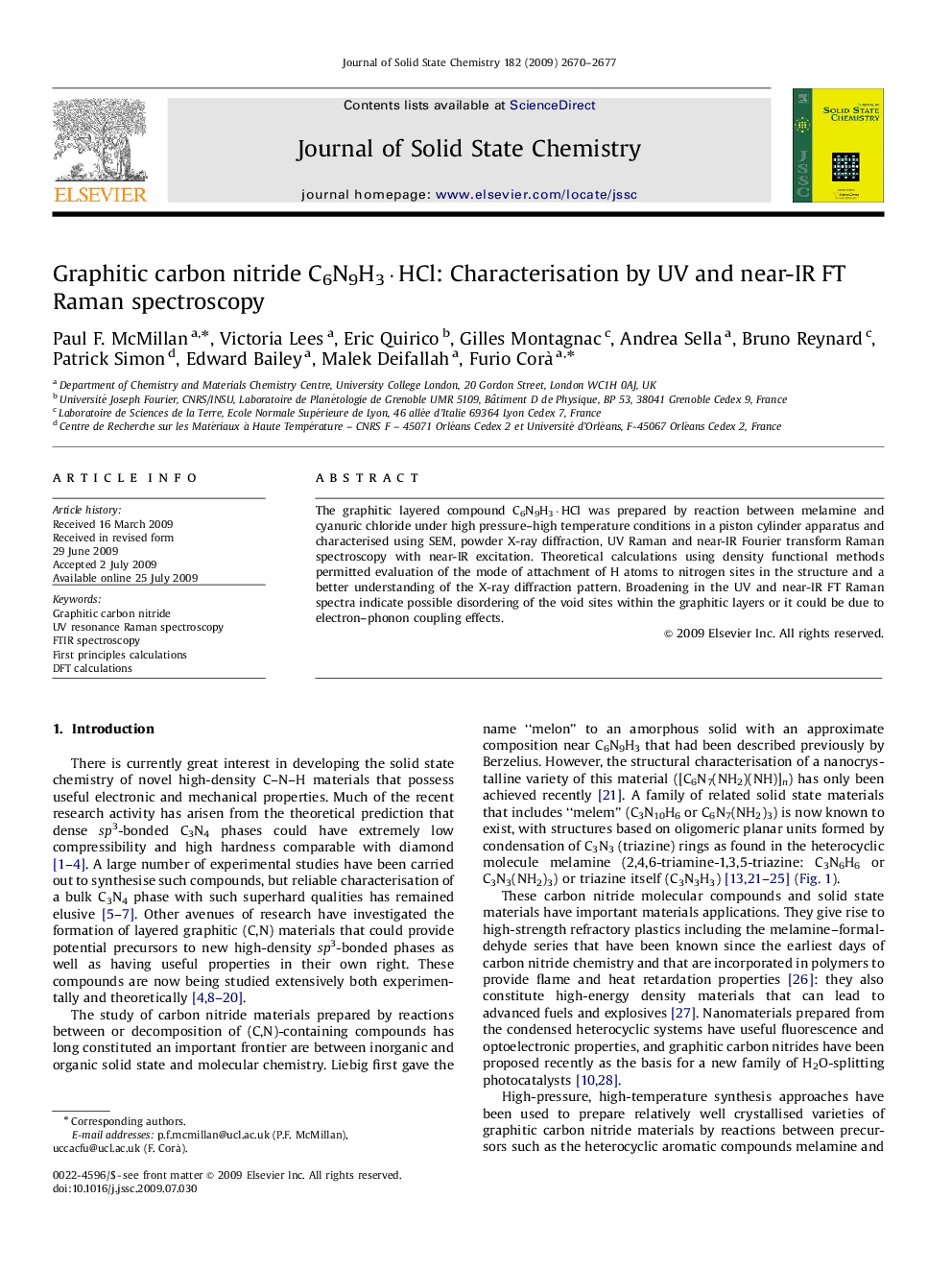| Article ID | Journal | Published Year | Pages | File Type |
|---|---|---|---|---|
| 1330947 | Journal of Solid State Chemistry | 2009 | 8 Pages |
The graphitic layered compound C6N9H3·HCl was prepared by reaction between melamine and cyanuric chloride under high pressure–high temperature conditions in a piston cylinder apparatus and characterised using SEM, powder X-ray diffraction, UV Raman and near-IR Fourier transform Raman spectroscopy with near-IR excitation. Theoretical calculations using density functional methods permitted evaluation of the mode of attachment of H atoms to nitrogen sites in the structure and a better understanding of the X-ray diffraction pattern. Broadening in the UV and near-IR FT Raman spectra indicate possible disordering of the void sites within the graphitic layers or it could be due to electron–phonon coupling effects.
Graphical abstractThe graphitic layered compound C6N9H3·HCl was prepared by reaction between melamine and cyanuric chloride under high pressure–high temperature conditions in a piston cylinder apparatus and characterised using SEM, powder X-ray diffraction, UV Raman and near-IR Fourier transform Raman spectroscopy using near-IR excitation. Theoretical calculations using density functional methods permitted evaluation of the mode of attachment of H atoms to nitrogen sites around the C12N12 voids within the layered structure and also led to better understanding of the X-ray diffraction pattern. Sharp peaks in the UV Raman spectra are due to C3N3 triazine ring units in the structure, that may be enhanced by resonance Raman effects. Broadening in the UV and near-IR FT Raman spectra indicate possible disordering within the graphitic layers or electron–phonon coupling effects.Figure optionsDownload full-size imageDownload as PowerPoint slide
